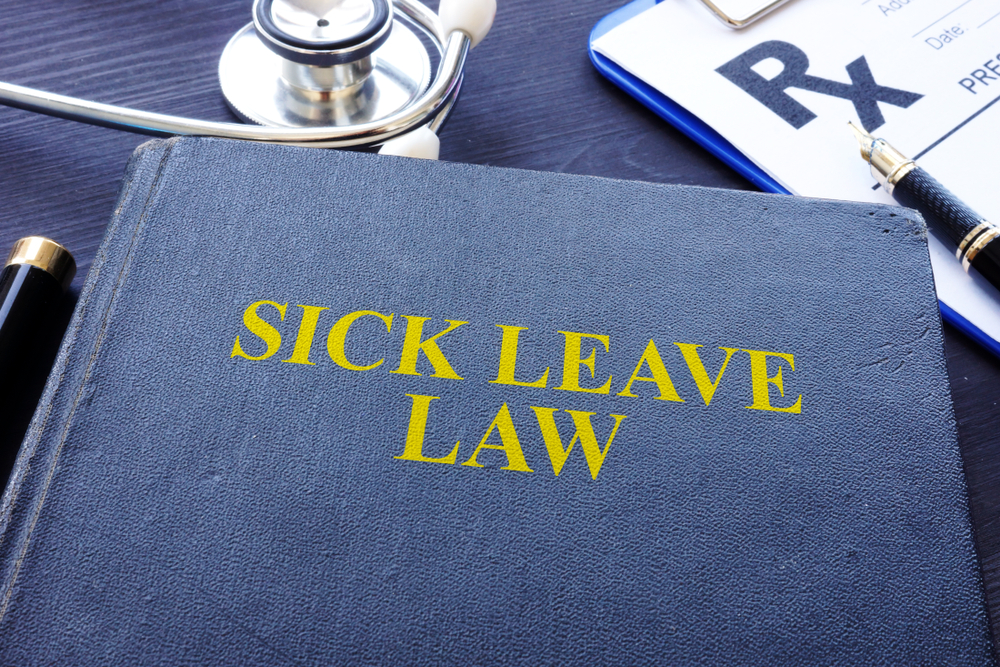Following the Senate and House’s narrow passage of HB 5005 last month, Governor Lamont signed the bill into law a few days ago, dramatically expanding Connecticut’s paid sick leave mandate to include most Connecticut employers. The governor and legislators ignored bipartisan concerns that Connecticut’s small business communities would be harmed. The biggest change HB 5005 made was to force all employers to adopt a paid sick leave policy by 2027 including those businesses with just a single employee. This marks a dramatic expansion from Connecticut’s previous paid sick leave mandate on employers with 50 or more employees.
In nearly all Connecticut businesses:
- Employers will be forced to provide 1 hour of paid leave for every 30 hours worked
- Employees can accrue up to 40 hours per year
So, how does Connecticut stack up against other states on paid sick leave for small businesses?
Small businesses (9 or fewer employees)
- Paid leave doesn’t apply
- Ruling: Less Strenuous than Connecticut
Large businesses (10 or more employees)
- Employers must provide 1 hour of paid leave for every 40 hours worked
- Employees can accrue up to 40 hours per year
- Ruling: Less Strenuous than Connecticut
Workers can only use their leave after they have worked a minimum of 120 days.
Maine’s paid leave law is not limited to sick time – employees can use their accrued leave for any reason, including emergency, illness, sudden necessity, planned vacation, etc.
Small businesses (14 or fewer employees)
- Paid sick leave doesn’t apply to employers with 14 or fewer employees
- Ruling: Less Strenuous than Connecticut
Large businesses (15 or more employees)
- Employers must provide 1 hour of paid leave for every 30 hours worked
- Employees can accrue up to 40 hours per year
- Ruling: Equally Strenuous vs. Connecticut
Employees are not allowed to use sick leave within their first 106 days of employment. Sick time cannot be carried over from a previous year.
Small businesses (10 or fewer employees)
- Paid sick leave doesn’t apply
- Ruling: Less Strenuous than Connecticut
Large businesses (11 or more employees)
- Employers must provide 1 hour of paid leave for every 30 hours worked
- Employees can accrue up to 40 hours per year
- Ruling: Equally Strenuous vs. Connecticut
All businesses
- Employers must provide 1 hour of paid leave for every 30 hours worked
- Employees can accrue up to 40 hours per year
- Ruling: Equally Strenuous vs. Connecticut
Small businesses (1-4 employees) with net income >$1 million
- Paid leave not offered
- Ruling: Less Strenuous than Connecticut
Small businesses (1-4 employees) with net income over $1 million
- Employers must provide 1 hour of paid leave for every 30 hours worked
- Employees can accrue up to 40 hours per year
- Ruling: Equally Strenuous vs. Connecticut
Medium businesses (5-99 employees)
- Employers must provide 1 hour of paid leave for every 30 hours worked
- Employees can accrue up to 40 hours per year
- Ruling: Equally Strenuous vs. Connecticut
Large businesses (100 or more employees)
- Employers must provide 1 hour of paid leave for every 30 hours worked
- Employees can accrue 56 hours per year
- Ruling: More Strenuous than Connecticut
Small businesses (17 or fewer employees)
- Paid sick leave doesn’t apply
- Ruling: Less Strenuous than Connecticut
Large businesses (18 or more employees)
- Employers must provide 1 hour of paid sick leave for every 35 hours worked
- Employees can accrue 40 hours per year
- Ruling: Less Strenuous than Connecticut
All businesses
- Employers must provide 1 hour of paid leave for every 52 hours worked
- Employees can accrue 40 hours per year
- Ruling: Less Strenuous than Connecticut
In short, while it is the norm in 8 eastern states to have some form of paid sick leave on the books (New Hampshire and Pennsylvania have no such law), only New Jersey’s paid sick leave policy burdens small businesses to a similar degree that Connecticut’s new mandate does. Most eastern states grant an exemption from paid sick leave for small businesses, which is defined differently across states, from a low of 1-4 employees in New York to a high of up to 17 employees in Rhode Island. In Vermont, the only state that doesn’t make the small vs. large business distinction, employees can accumulate 1 hour of paid leave for every 52 hours worked, a slower and less burdensome rate than the “every 30 hours” rule Connecticut adopted.
To become a state friendlier toward small businesses, Connecticut should look to its neighbors in defining a reasonable paid sick leave policy that makes it competitive.

